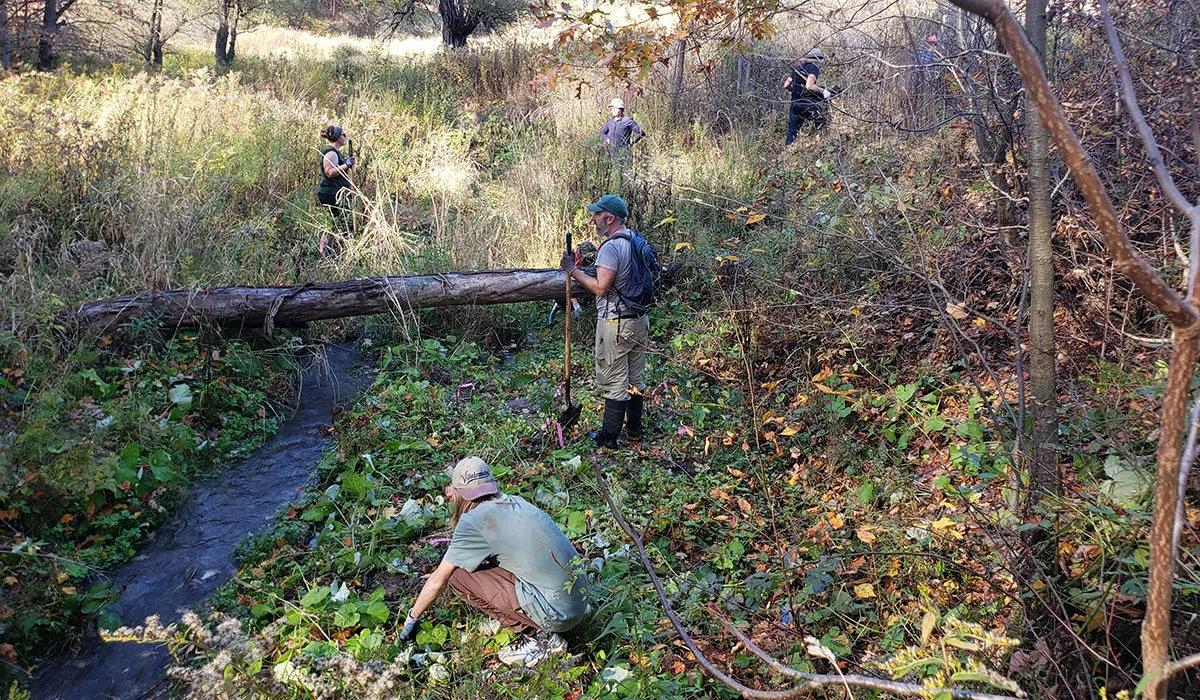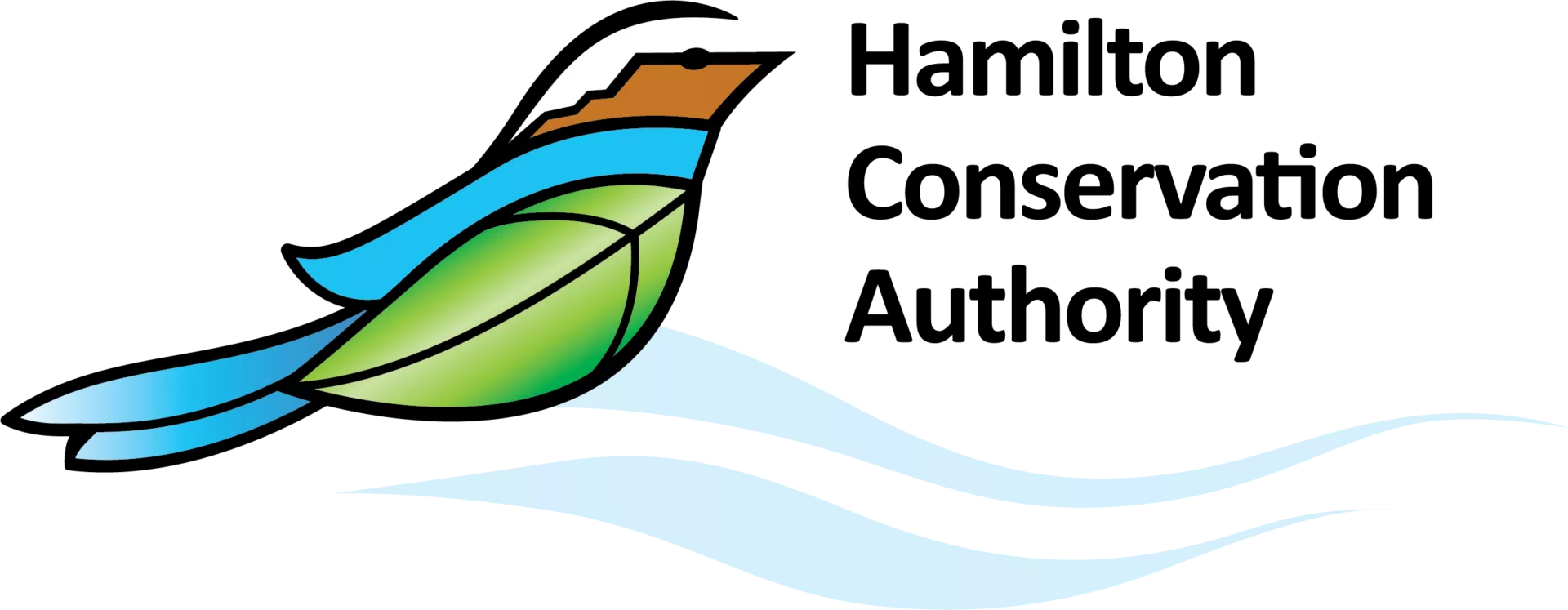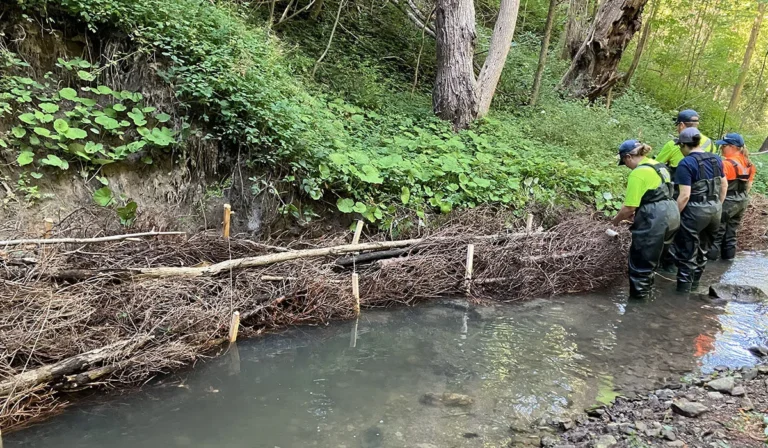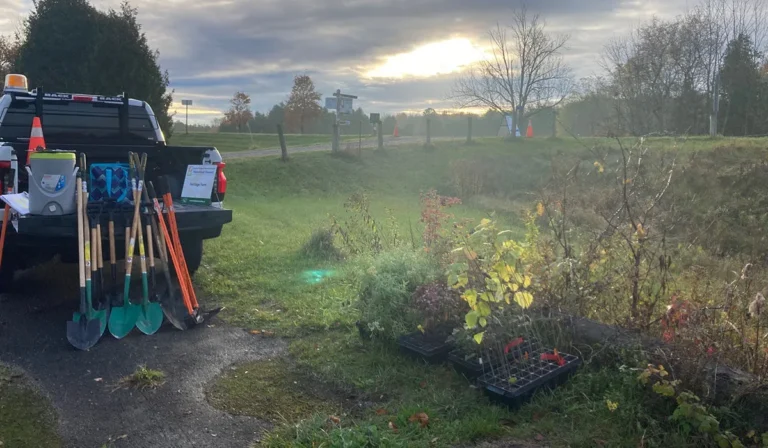Building Better Buffers

For over 30 years, HCA has supported landowners enhancing and restoring natural areas on their properties through free services provided by their Hamilton Watershed Stewardship Program (HWSP). As we continue to support landowners in their conservation efforts, we are pleased to share with you the Building Better Buffers initiative. Eligible landowners can apply to receive up to a $5,000 grant to enhance, restore or create new riparian buffers!
What are buffers?
Riparian buffers are areas of vegetation directly alongside creeks, lakes and wetlands.
Why are they important?
A healthy riparian buffer:
- Has a wide array of native plants, shrubs and or trees that contribute to biodiversity and provide food, shelter and cover for wildlife in water and on land.
- Stabilizes streambanks with their rooting systems, resulting in less erosion and sediment within the creek, supporting high-quality habitat on-site and downstream.
- Filters and removes excess sediment, nutrients and or pollutants from runoff before it enters local creeks.
- Improves surface and drinking water quality within the HCA watershed, Hamilton Harbour, and Lake Ontario.
- Provides a vital corridor for wildlife as they move between natural areas.
- Helps to intercept and absorb runoff to reduce the risk of flooding to downstream areas.
- Shades the water, promoting cooler water temperatures which benefit aquatic life and water quality.
A Bit of a Background!
Over 20 years ago the HWSP obtained funding through Environment and Climate Change Canada’s Great Lakes Sustainability Fund to map and analyze riparian buffer information within the Hamilton Harbour Watershed. HWSP utilized the data from this project to reach out to landowners in the Harbour watersheds to encourage them to create new riparian buffers alongside creeks in the harbour watershed to help improve water quality flowing downstream.
The results speak for themselves!
Since that mapping project, it’s been identified that water quality in Hamilton Harbour is impacted most by pollution from non-point sources like stormwater runoff, as opposed to point source pollution, like discharge from wastewater treatment plants.
Recognizing the need to reassess planting opportunities to help further improve water quality, HCA received funding last year from the Canada-Ontario Agreement on Great Lakes Water Quality and Ecosystem Health to undertake a similar mapping-based study. Under the new study, Riparian Buffer boundaries are mapped, measured, and categorized into 1 of 5 width classes: No Buffer, Less than 5 meters, 5-15 meters, 15-30 meters, or 30+ meters.
The mapping project completed over 20 years ago was limited to capturing just the length of riparian buffers along watercourses. This time, we are able to capture the total area of riparian buffers, as seen here.
Why should we be Building Better Buffers?
A healthy riparian buffer is the most impactful conservation project that a landowner can implement on the local landscape!
In the short term, a healthy riparian buffer enhances water quality to areas downstream – a vital step towards delisting Hamilton Harbour as an International Joint Commission Area of Concern!
The long-term impacts are the conservation and protection of water quality on the landscape, helping our watershed to remain healthy and prosperous for future generations!
What is the Building Better Buffers initiative?
The HWSP is starting to contact landowners in areas where Building Better Buffers will help to improve water quality and create wildlife habitat, offering free on-site consultations, resources, planting recommendations and financial assistance to Build Better Buffers. Eligible landowners can apply to receive up to a $5,000 grant to enhance, restore or create new riparian buffers!
Get in Touch
If you own property along a creek and are interested in learning about Building Better Buffers, please reach out!
Cherish Gamble
Watershed Stewardship Technician
Phone: 905-525-2181 Ext. 181
Email: cgamble@conservationhamilton.ca
Jeff Stock
Watershed Stewardship Technician
Phone: 905-525-2181 Ext. 196
Email: jstock@conservationhamilton.ca

HCA Contact Information
Phone: 905-525-2181
Email: nature@conservationhamilton.ca



